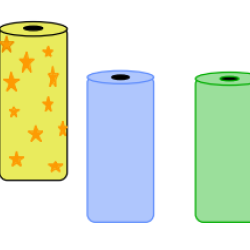Source Institutions
Source Institutions
Add to list Go to activity
Activity link broken? See if it's at the internet archive

In this math lesson, learners compare products to determine the best product. Learners participate in a role playing activity where they assume the role of business executives who must decide which of three prototypes of paper towels would be the best buy for consumers. Learners use problem solving strategies to find the best value in terms of cost and then conduct experiments to test the absorbency of the three prototypes. In their testing procedures, learners find the surface area of the stain as they drop water into the center of a paper towel and then use a transparent grid to measure the area of the stain. Learners then analyze the results of their absorbency test and the cost factors to determine which towel is the best value.
- 5 to 10 minutes
- 45 to 60 minutes
- $5 - $10 per group of students
- Ages 8 - 11
- Activity, Experiment/Lab Activity, Lesson/Lesson Plan
- English
Quick Guide
Materials List (per group of students)
- Three rolls of paper towels (choose 3 brands that vary in price and sheets per roll)
- Large chart with 3 columns marked A, B, and C
- Copies of Activity Sheet: Picking the Best Paper Towel
- Calculators
- Droppers
- Transparency pens
- Transparent grids (Activity Sheet: Transparent Grid template)
- Sheets of paper towels
- Water (adding color to the water will help learners see it better)
Subjects
-
Mathematics
-
Measurement
- Size and Scale
- Polygons
- Number and Operations
- Reasoning and Proof
-
Measurement
-
The Nature of Technology
-
The Design Process
- Problem Solving
-
The Design Process
Informal Categories
- Financial Literacy
Audience
To use this activity, learners need to:
- see
- read
- touch
Learning styles supported:
- Involves teamwork and communication skills
- Uses STEM to solve real-world problems
- Involves hands-on or lab activities
Other
This resource is part of:
Access Rights:
- Free access
By:
Rights:
- All rights reserved, PBS, 2012
Funding Source:
- US Department of Education
